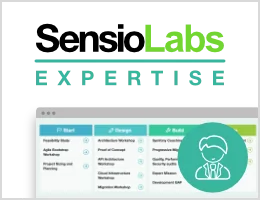NotNull
Validates that a value is not strictly equal to null. To ensure that
a value is not blank (not a blank string), see the NotBlank
constraint.
| Applies to | property or method |
| Class | NotNull |
| Validator | NotNullValidator |
Basic Usage
If you wanted to ensure that the firstName property of an Author
class were not strictly equal to null, you would:
1 2 3 4 5 6 7 8 9 10
// src/Entity/Author.php
namespace App\Entity;
use Symfony\Component\Validator\Constraints as Assert;
class Author
{
#[Assert\NotNull]
protected string $firstName;
}1 2 3 4 5
# config/validator/validation.yaml
App\Entity\Author:
properties:
firstName:
- NotNull: ~1 2 3 4 5 6 7 8 9 10 11 12
<!-- config/validator/validation.xml -->
<?xml version="1.0" encoding="UTF-8" ?>
<constraint-mapping xmlns="http://symfony.com/schema/dic/constraint-mapping"
xmlns:xsi="http://www.w3.org/2001/XMLSchema-instance"
xsi:schemaLocation="http://symfony.com/schema/dic/constraint-mapping https://symfony.com/schema/dic/constraint-mapping/constraint-mapping-1.0.xsd">
<class name="App\Entity\Author">
<property name="firstName">
<constraint name="NotNull"/>
</property>
</class>
</constraint-mapping>1 2 3 4 5 6 7 8 9 10 11 12 13 14 15
// src/Entity/Author.php
namespace App\Entity;
use Symfony\Component\Validator\Constraints as Assert;
use Symfony\Component\Validator\Mapping\ClassMetadata;
class Author
{
// ...
public static function loadValidatorMetadata(ClassMetadata $metadata): void
{
$metadata->addPropertyConstraint('firstName', new Assert\NotNull());
}
}Options
groups
type: array | string default: null
It defines the validation group or groups of this constraint. Read more about validation groups.
message
type: string default: This value should not be null.
This is the message that will be shown if the value is null.
You can use the following parameters in this message:
| Parameter | Description |
|---|---|
{{ value }} |
The current (invalid) value |
{{ label }} |
Corresponding form field label |
payload
type: mixed default: null
This option can be used to attach arbitrary domain-specific data to a constraint. The configured payload is not used by the Validator component, but its processing is completely up to you.
For example, you may want to use several error levels to present failed constraints differently in the front-end depending on the severity of the error.

